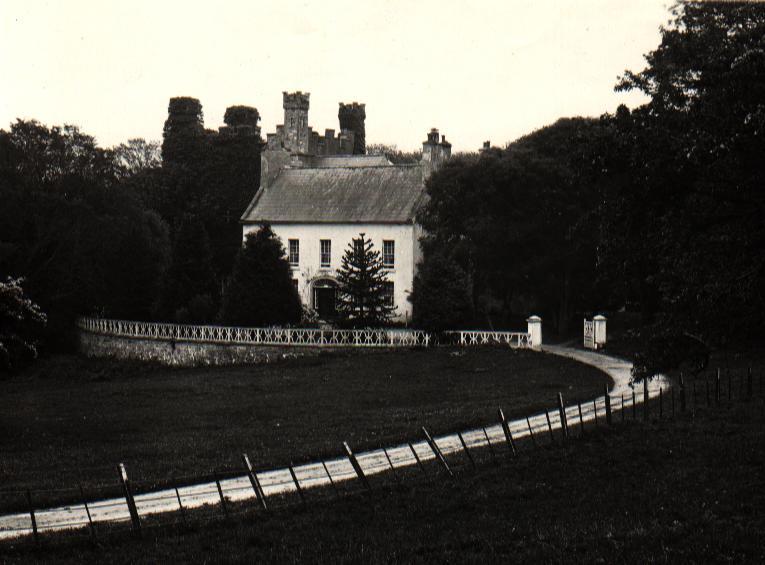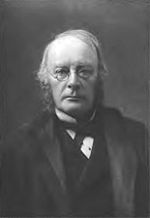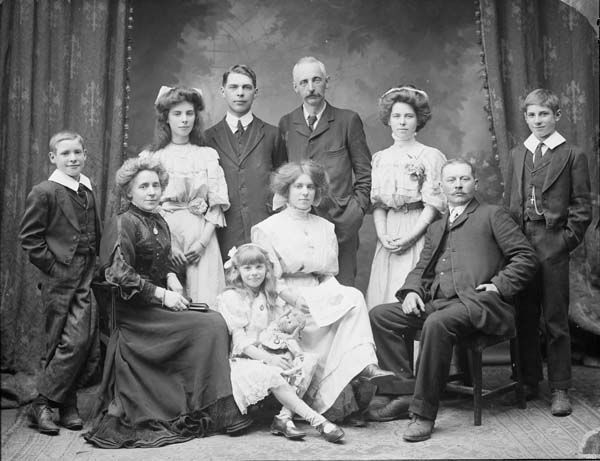Butlerstown Castle - A History

1901
2015
The battlemented
turrets of Butlerstown Castle can be seen rising above the trees on the
top of Butlerstown hill, to the South of the Main Cork Road ( N.25 ).
Its ancient name was Killotteran, the name of the parish in which it
stands.The Manor of Killotteran was held in the thirteenth century by
Richard de Milers of Blundeston; whose son Robert de Blundeston
exchanged it with Geoffrey le Butiler for the latter's
lands in Hampshire in 1248.Robert's
son William had already granted the manor to William de Weyland of
Ballygunner, but this grant was made without Royal license and does not
seem to have taken effect.
The Butlers who
settled at Butlerstown and gave their name to the place were an English
family, quite separate from the Butlers of Ormond.
They
acquired considerable property and influence in the country and city of
Waterford, and divided into many branches.
About the
middle of the fifteenth century, the last Butler of Butlerstown, Joan
Butler, was married to a Nugent of the Delvin family, and the new
proprietors settled at Cloncoskraine, where they built their main
Castle.
Butlerstown Castle
was only a secondary residence of the Nugent family, and about 1560 John
Nugent of Cloncoskraine conveyed
"
The Castle and
Messuage of Upper Butlerstown
" to James
Sherlock, whose father Thomas was a younger son of the first Sherlock of
Gracedieu.
At the time of the
Confederate Wars, Butlerstown was occupied by Sir Thomas Sherlock, great
- grandson of James.
This man's
religion and nationality did not prevent him from displaying the most
callous self-interest.
Mayor of
Waterford in 1632, knighted by the Earl of Cork, he was one of the
wealthiest land-owners in the county.
When the
rebellion broke out in 1641, he was instrumental in helping St. Leger to
terrorize the local peasantry, and by his own admission , hunted and
hanged one hundred "
Irish
Marauders ".
His regime did not last long, however, for when Lord Mountgarrett
arrived before Waterford early in 1642, he laid siege to Butlerstown
Castle and took it.Sir Thomas fled to Dublin, where he complained the
the insurgents had "
stripped him of all, and turned him out of doors in his slippers without
stockings, leaving him only a red cap and green mantle
".
Some years
ago , a cannonball was unearthed near the castle by Mr. Seamus O'Cleirigh,
and is now the property of Mr. A.K. Killeen of Tramore; it is probably a
relic of this siege.
In 1654 the Civil
Surveyors found at Butlerstown
"
a stone house, a broken Castle and a shrubby wood of oake
", from
which it would appear that Sherlock had built a stone dwelling-house
onto the Castle, which had fallen to ruin.
The Castle
continued in its ruinous state until well into the last century; Smith
remarked that "
by its ruins it
seemed to have been demolished by powder
", and later
writers have not been slow in asserting that it was the hand of Cromwell
that lit the fuse, but it seems unlikely that Cromwell would have wasted
powder on an uninhabited Castle.
The Sherlocks were
restored by Charles II., and continued to occupy Butlerstown until the
close of the eighteenth century.
About 1790 a
great fire broke out
at the Castle, in which many family heirlooms were consumed.
The then
owner, Thomas Sherlock, was obliged in 1795 to sell his property and
move to Killaspy , Co. Kilkenny.
The Castle
was then occupied for some sixty years by the Backas family, of
Ballyclough.
The third and last
Robert Backas caught his hand in a threshing machine in 1859 and went to
India, where he died of cholera two years later.
The next occupant
was Samuel Ferguson,
a Nort hern Nationalist, who instituted large scale
restorations at the Castle.
The Keep was
refaced and equipped with streamlined modern battlements, and the
adjoining dwelling house was rebuilt.
A door in
the Coach House bears his initials and the date 1874.Under his auspices,
the Butlerstown branch of the Irish National League held meetings at the
Castle.
After his death in
1885 the Castle passed to his son Joseph Biggar, the noted antiquarian.
Amongst the
guests of the Biggars at the Castle were the Gillis's
of Pau, France, and the great Tim Healy himself.
By a strange
twist of fortune, the tenant of the younger Biggar at Butlerstown at the
close of the Century was T.R. Prendergast, whose wife was a
great-great-granddaughter of the last Sherlock of Butlerstown.
hern Nationalist, who instituted large scale
restorations at the Castle.
The Keep was
refaced and equipped with streamlined modern battlements, and the
adjoining dwelling house was rebuilt.
A door in
the Coach House bears his initials and the date 1874.Under his auspices,
the Butlerstown branch of the Irish National League held meetings at the
Castle.
After his death in
1885 the Castle passed to his son Joseph Biggar, the noted antiquarian.
Amongst the
guests of the Biggars at the Castle were the Gillis's
of Pau, France, and the great Tim Healy himself.
By a strange
twist of fortune, the tenant of the younger Biggar at Butlerstown at the
close of the Century was T.R. Prendergast, whose wife was a
great-great-granddaughter of the last Sherlock of Butlerstown.
Early in the
present Century, the Castle was occupied by Harry Fisher , the Waterford
newspape rman.
Harry Fisher ( seen sitting here on the right hand side of the picture
)was responsible for setting up "
The Munster Express " Newspaper in
Waterford City in 1860. The newspaper is still being published today but
is no longer in the hands of the Fisher Family.
rman.
Harry Fisher ( seen sitting here on the right hand side of the picture
)was responsible for setting up "
The Munster Express " Newspaper in
Waterford City in 1860. The newspaper is still being published today but
is no longer in the hands of the Fisher Family.
The next landlords
were the Nolan family of Kilronan, who installed as tenant an old lady
named Hearne, who died at the age of
94,
and later a family named O'Connor.
Mike O'Connor
was active in the Troubled Times, and in the War of Independence,
frequently sheltered Volunteers in the Outhouses of the Castle.
On one
occassion a Volunteer named O'Rourke
was wounded by the Black and Tans, who pursued him to the Butlerstown
area.
As the passed up
and down the road searching for him, Mike O'Connor
leaned against the gate, passing the time of day and making helpful
suggestions.
All the time he had
O'Rourke
hidden at the top of the Castle.
During the
Civil War, Butlerstown was occupied by a company of Republicans
commanded by Tom Brennan of Tramore, several of the house in the area
being held at this time ( 1920's
) to cover the retreat of the Republicans and delay the advance of the
Free State Soldiers after the capture of Waterford.
O'Connor's
wife was ill at the time, and the besiegers allowed food to be hauled up
in a basket to her at the top of the Castle.
Eventually
her condition became so critical that O'Connor persuaded the garrison to
surrender.
After the passing
of the Land Act in the late 1920's,
the Butlerstown estate was broken up.
The Nolans
took over the Castle, and as it was far to big for their needs , had it
stripped down and auctioned, retaining only the Coach House as a
dwelling-house.
The only part of
the original Castle now surviving is the Keep, and this is much reduced
in height and greatly altered.
It is 39
feet log and 31 feet wide, and stands to height of 47 feet.
The South
wall, which originally faced the bawn, is 10.5 feet thick, the other
three walls are 6.5 feet thick.
The Keep has
a steep base-batter.
On the
ground floor, there are doors in the North and South walls and a
fireplace in the East wall.
This floor
was cut off from the others, and the main entrance to the Castle was in
the South wall of the first floor, and was reached by a flight of steps
leading up from the Bawn.
This led to
a mural chamber which retains traces of wicker centring.
To the left
of this, a vice leads to the second and third floors, which are reached
by mural chambers in the South wall.
Egan states
that on the top floor could be seen in his day a stucco representation
of the crucifixion, which led to the belief that this room was once used
as a chapel.
From the third floor, a flight of steps in the South-East corner led to the higher stories, which are now destroyed. One vault survives, that over the first floor, and it has traces of wicker centring. This floor was used as a storeroom. Curiously enough, the only entrance to it is from a long mural passage. In the spring of the vault, a staircase branches off from the vice and descends through the West wall to this passage, which then runs along the West and North walls to the North-East corner. In its Course it passes over the outside entrance to the Keep, and probably once contained a murdering-hole. It is the most interesting feature of the Castle, which in general presents a sorry spectacle of the ancient modernized and then left to ruin.